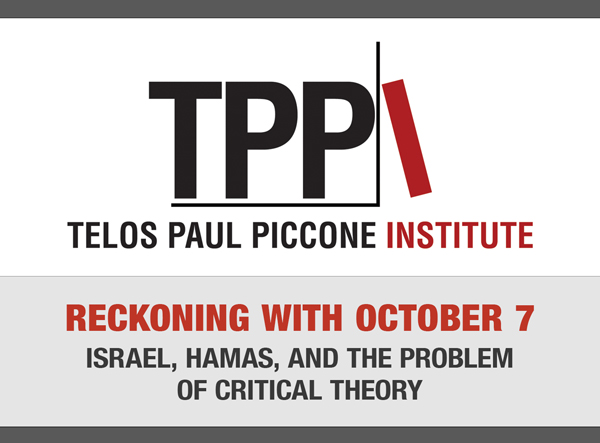—Gabriel Noah Brahm, Director of the Telos-Paul Piccone Institute’s Israel initiative
 “From the river to the sea Palestine will be free” and “We don’t want no two states, we want 1948” are two of the slogans that have been heard on American campuses during the protests in recent weeks. These reflect the idea that Israel should be replaced by a Palestinian-Arab state and violence should be used to achieve this goal if necessary. While much of the discourse since October 7 has focused on the nature of Hamas’s attack—the rapes, the burnings, the shootings—not enough has been written on what it actually sought to achieve.
“From the river to the sea Palestine will be free” and “We don’t want no two states, we want 1948” are two of the slogans that have been heard on American campuses during the protests in recent weeks. These reflect the idea that Israel should be replaced by a Palestinian-Arab state and violence should be used to achieve this goal if necessary. While much of the discourse since October 7 has focused on the nature of Hamas’s attack—the rapes, the burnings, the shootings—not enough has been written on what it actually sought to achieve.
There is nothing surprising about violent Palestinian opposition to Zionism. As Vladimir Jabotinsky wrote: “The native populations, civilised or uncivilised, have always stubbornly resisted the colonists. . . . Every native population in the world resists colonists as long as it has the slightest hope of being able to rid itself of the danger of being colonised.” Ireland, Algeria, India, Vietnam—it is the same every time. What makes the Palestinian case different is that the Jews also have a legitimate claim to the land. This is why Israelis have responded differently to Palestinian violence than in all the examples above. As the famous Zionist song puts it: “I have no other country.”
This rejectionism creates a situation whereby the use of violence has always been more catastrophic for the Palestinians than it has been for the Jews. This phenomenon goes all the way back to 1929. That year, following false claims regarding Jewish ambitions toward the Temple Mount/Al Aqsa, violent riots broke out across Palestine, with the main focal points being Jerusalem, Jaffa, Tzfat, and Hebron. They lasted around a week, and by the end 133 Jews had been killed—the vast majority of whom had been murdered by Arabs—and 116 Arabs were killed—around 20 of whom were murdered by Jews, with the majority being killed because of police and military activities.


